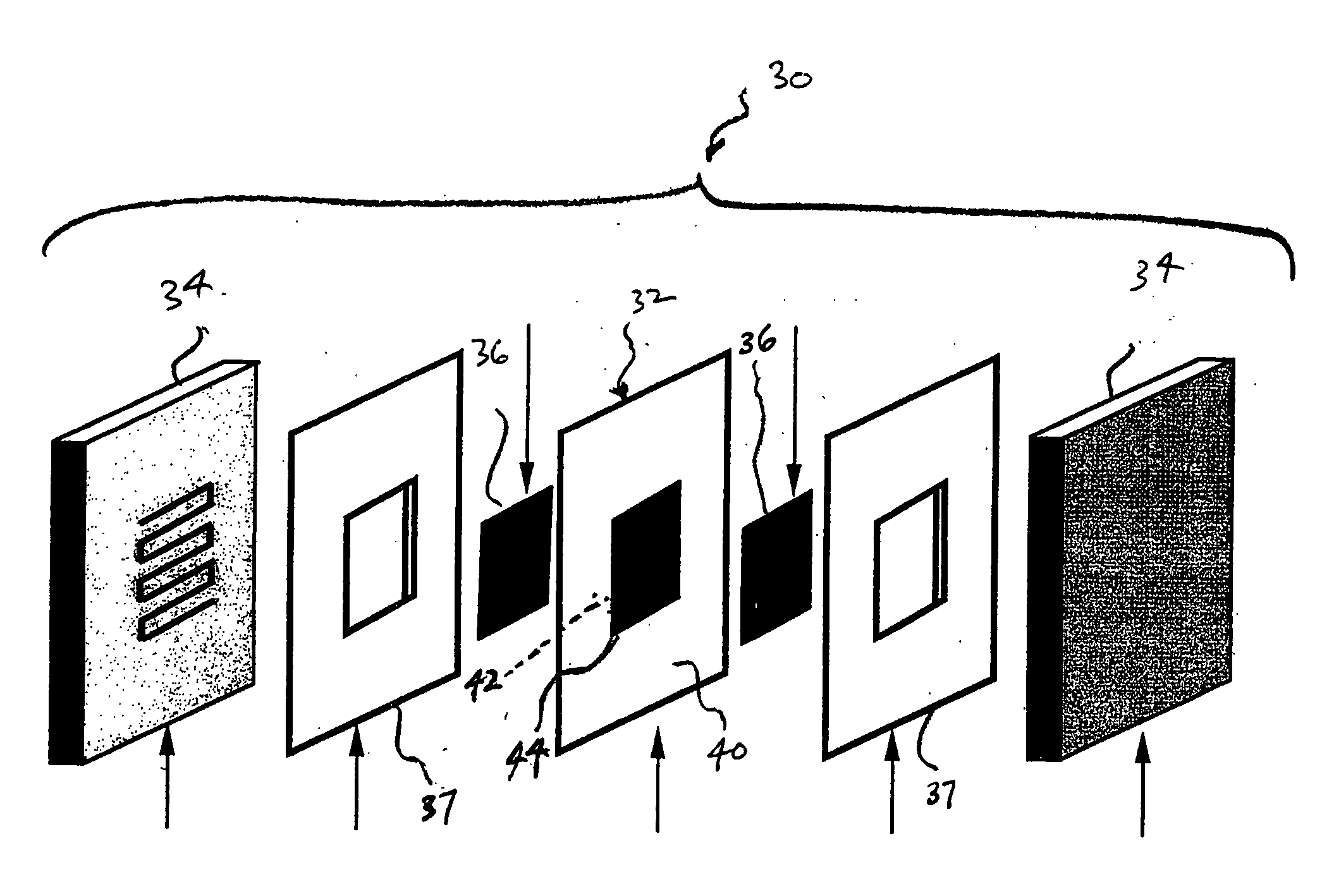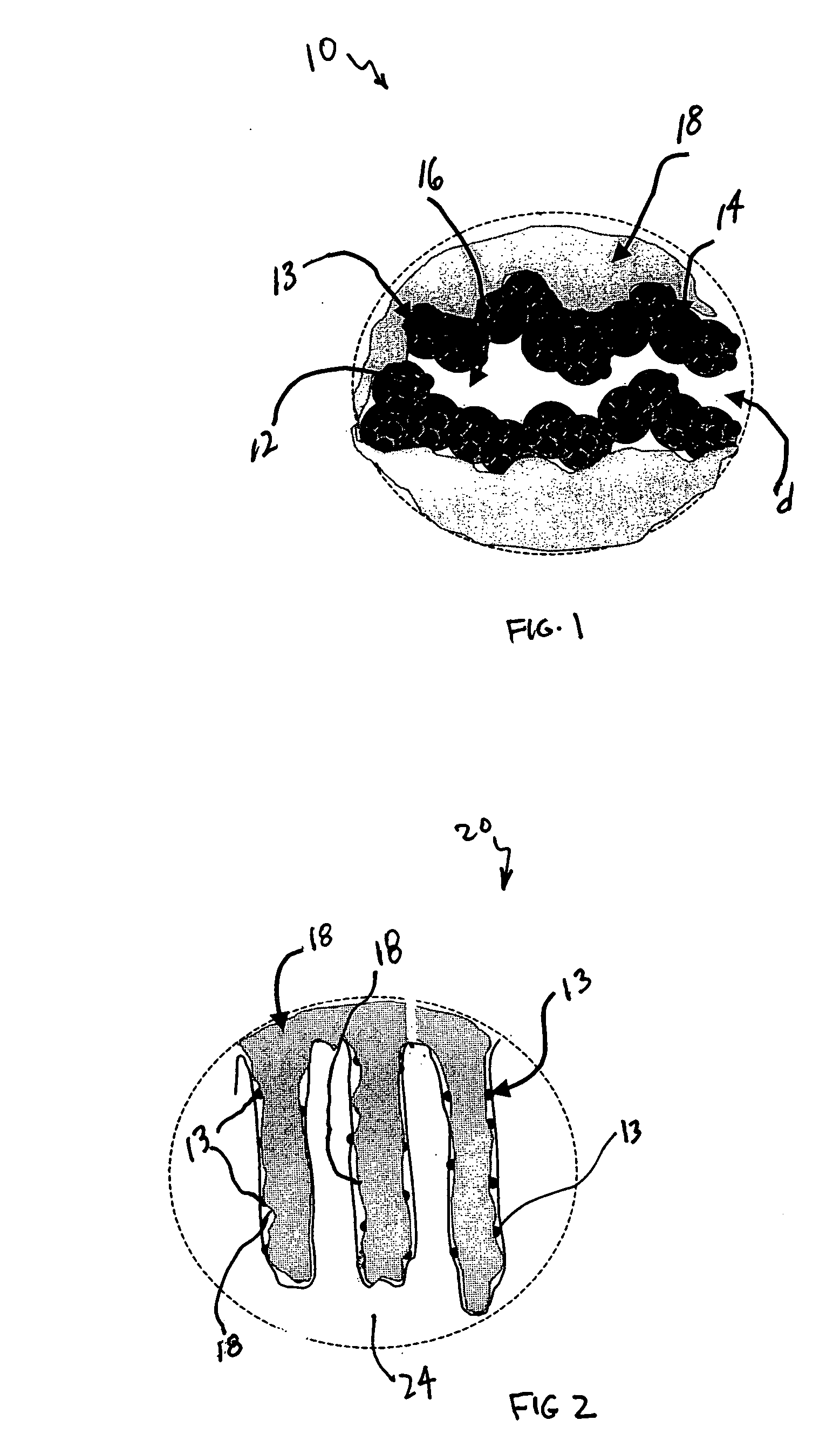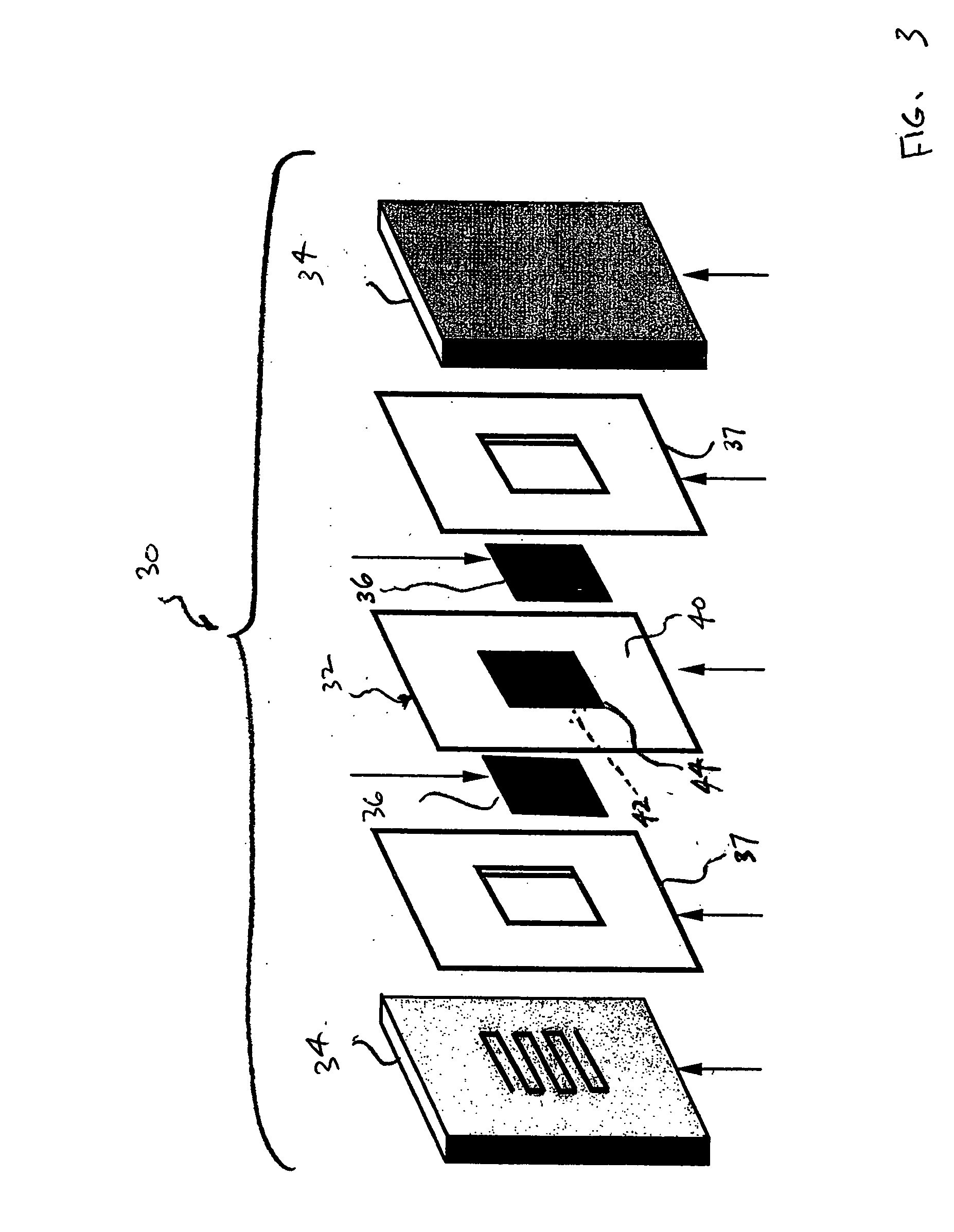Method of preparing membrane electrode assemblies with aerogel supported catalyst
a technology of catalyst and catalyst layer, which is applied in the direction of cell components, final product manufacturing, sustainable manufacturing/processing, etc., can solve the problems of unfavorable use of catalyst, and unpredictable variation in thickness of polymer electrolyte in the catalyst layer, so as to achieve superior performance over measly, the effect of modifying the porosity of the aerogel and pore size of the aerogel
- Summary
- Abstract
- Description
- Claims
- Application Information
AI Technical Summary
Benefits of technology
Problems solved by technology
Method used
Image
Examples
example 1
Characterization of Aerogel Supported Platinum Catalysts
[0057] Aerogel supported platinum catalysts have been provided for subsequent use in the manufacture of cathode catalyst layers for fuel cell applications. Two catalysts that differ in platinum content and porosity were analyzed. The results of each catalyst are presented below in Table 1.
TABLE 1Physical characteristics of catalyst samplesSamplePlatinum content (%)Porosity (nm)1371622022
[0058] The porosity was estimated using the Brunauer-Emmett-Teller (BET) method. In the BET method, adsorption and desorption isotherms of nitrogen were measured using a gas adsorption analyzer (Sorptomatic 1990, available from Horiba). Mesopore size distributions and mesopore volumes were estimated for pore diameters of 2 nm to 50 nm by applying the Dollimore-Heal method to the desorption isotherm of nitrogen.
[0059] The mean diameter and the surface area of the platinum particles were measured by hydrogen adsorption. High resolution transmi...
example 2
Preparation of Catalyst Paste and MEA
[0061] For anodes (reference electrodes), porous carbon aerogel supported catalysts from Tanaka Kikinzoku Kogyo (TKK) having metal contents of about 53.5% metal were mixed in nitrogen atmospheres with water, 5 wt. % Nafion® solutions, and appropriate solvents. The prepared mixtures were homogenized using an Ultra-Terrux homogenizer with further evaporation of the excess amount of the solvent to obtain the appropriate viscosity.
[0062] Cathode aerogel supported catalysts having different platinum loadings and pore size distributions received as rods from Aerogel Composite, LLC, were ground in an agate mortar and subsequently prepared as inks by the above-mentioned process.
[0063] Polytetrafluoroethylene film, which is available as Teflon® from E. I. duPont de Nemours and Company, Wilmington, Del., was used as decals for the application of the anodes and cathode. The films were weighed before the application of the catalyst inks. The inks were the...
example 3
Measurement of Platinum Particle Surface Area
[0066] The measurements of platinum surface area in contact with the perfluorosulfonated ionomer surface area and thus available for electrochemical reaction were made using a cyclic voltammetry (CV) technique in a four-point probe configuration. The use of cyclic voltammetry was used to determine the amount of hydrogen crossing over the membrane that was oxidized. Cyclic voltammetry plots were obtained in the range of 0.01 to 0.8 volts (V) at a scan rate of 20 millivolts per second (mV / sec) at room temperature (about 23 degrees C. to about 27 degrees C.) using a potentiostat (Princeton potentiostat Model 273). To avoid the presence of oxygen, pure nitrogen was supplied to the cathode side (the working electrode) of an MEA and pure hydrogen was supplied to the anode side (the counter electrode) of the MEA at a flow rate of 200 cubic centimeters per minute (cc / min).
[0067] An estimation of the electrochemical surface area (ESA) of the cat...
PUM
| Property | Measurement | Unit |
|---|---|---|
| Temperature | aaaaa | aaaaa |
| Composition | aaaaa | aaaaa |
| Chemically inert | aaaaa | aaaaa |
Abstract
Description
Claims
Application Information
 Login to View More
Login to View More - R&D
- Intellectual Property
- Life Sciences
- Materials
- Tech Scout
- Unparalleled Data Quality
- Higher Quality Content
- 60% Fewer Hallucinations
Browse by: Latest US Patents, China's latest patents, Technical Efficacy Thesaurus, Application Domain, Technology Topic, Popular Technical Reports.
© 2025 PatSnap. All rights reserved.Legal|Privacy policy|Modern Slavery Act Transparency Statement|Sitemap|About US| Contact US: help@patsnap.com



